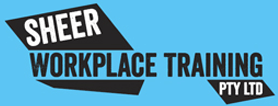Navigate Your Career Path with the Right High-Risk Work License
Choosing the right high-risk work license is crucial for anyone looking to pursue or advance their career in industries involving high-risk operations. In Brisbane, and indeed throughout Australia, being certified in high-risk work is not just a matter of compliance, but also a stepping stone towards a successful and safe career.
Demystifying High-Risk Work Licenses: Unveiling the Right Fit for Your Career
A high-risk work license is a certification required to perform certain types of high-risk work. This includes operating heavy machinery, working at heights, or handling hazardous materials. These licenses are issued by registered training organisations (RTOs) after successful completion of a training course and assessment by an accredited assessor.
Exploring Different Types of High-Risk Work Licenses
- Forklift License (TLILIC0003): Essential for operating forklift trucks, this license is a staple in logistics and warehouse settings.
- Boom Lift License (Over 11 Metres – TLILIC0005): For operating large boom lifts, this license is crucial in construction and maintenance industries.
- Elevating Work Platform (EWP) Yellow Card: This certification covers various types of EWPs and is a must for tasks involving working at various heights.
- Work Safely at Heights (RIIWHS204E): This license is pivotal for jobs that require working at elevated levels, ensuring adherence to safety standards.
- Enter and Work in Confined Space (RIIWHS202E): This is necessary for roles that involve entering and working in confined spaces, such as tanks or tunnels.
- Conduct Telescopic Material Handler Operations (RIIHAN309F): Critical for those handling telescopic materials on construction sites.
- Operate Boiler Steam Turbine: For specialized roles in industrial plants, this license is key for operating and maintaining boiler steam turbines.
Evaluating Your Career Aspirations
- Understanding Industry Requirements: Different industries demand specific licenses. It’s crucial to understand the high-risk work licenses pertinent to your industry.
- Career Progression and Specialization: Some licenses may open doors to specialized roles or advancement opportunities. Consider how each license aligns with your long-term career goals.
Choosing the Right High-Risk Work License: A Comprehensive Guide for Career Success
The first step in choosing the right high-risk work license is to identify the specific requirements of your chosen career path. Different roles may require different types of licenses. For instance, a forklift truck license (TLILIC0003) is essential for those operating forklifts, while a boom type elevating work platform license is needed for operating specific types of lifts.
Each high-risk work license falls into a specific licence class. These classes are designed to reflect the type of machinery or work environment. It’s important to understand which licence class aligns with your career aspirations.
High-risk work licenses typically have a validity period, after which they must be renewed. Ensure you are aware of these timelines and the process for renewal to maintain your eligibility for work.
Key Steps in Acquiring a High-Risk Work License
- Initial Consultation with an RTO: Begin by discussing your career goals with a registered training organisation to identify the most suitable license for your needs.
- Enrolling in the Appropriate Course: Choose a course that aligns with your career objectives and meets the requirements for the desired high-risk work license.
- Undergoing Rigorous Training and Assessment: Participate in both theoretical and practical training sessions, leading to an assessment by an accredited assessor.
- Acquiring a Statement of Attainment: Upon successful completion of the training, receive a statement of attainment, which is a prerequisite for applying for the high-risk work license.
- Applying for the License within 60 Days: Ensure to apply for the high-risk work license within 60 days of receiving your statement of attainment.
- Continual Learning and Skill Upgradation: Stay informed about the latest practices and regulations in high-risk work to maintain your license’s validity.
Emphasizing Safe Work Practices
- Adherence to Work Health and Safety Standards: High-risk work licenses ensure that holders are knowledgeable about and adhere to essential safety standards in their respective fields.
- Perform High-Risk Work with Confidence: With the right license, you can confidently and safely perform high-risk tasks, knowing you have the training and skills required for the job.
Understanding the Significance of High-Risk Work Licenses
- Legal and Professional Requirement: These licenses are not just a formality; they are a legal requirement for performing certain high-risk tasks and are recognized across the industry.
- A Mark of Competence and Safety: Holding a high-risk work license demonstrates your commitment to safety and competence in your field.
From Aspiration to Achievement: Selecting the Ideal High-Risk Work License for Your Career
In the journey of selecting the right high-risk work license, understanding the nuances of various licenses and the specifics of the training process is vital. Here, we dive deeper into additional aspects to consider in this important decision.
- Identifying Industry-Specific Needs
Different industries require specific high-risk work licenses. For instance, a license for a boiler steam turbine might be essential in the energy sector, whereas a construction site might require different skills. Assess the industry you’re aiming to enter and identify the specific high-risk work licenses it demands.
- Researching Registered Training Organisations (RTOs)
Select an RTO that not only offers the required training course but also has a good reputation and a track record of producing competent professionals. RTOs are crucial in providing the foundational knowledge and skills needed for high-risk work.
- Understanding Training Course Structure
Each training course has a unique structure. Some may focus more on practical skills, while others might delve deeply into safety protocols and theoretical knowledge. Choose a course structure that aligns with your learning style and career requirements.
- Learning About High Risk Licensing Requirements
High risk licensing often involves more than just training. It may include health assessments, background checks, and age requirements. Understanding these prerequisites will help you prepare adequately for your training and subsequent career.
- Engaging with Accredited Assessors
The role of an accredited assessor is crucial in your journey. They not only assess your competence but also provide insights into industry standards and expectations. Engaging actively with your assessor can provide valuable feedback for your professional development.
- Exploring the Scope of Licence Classes
Explore the different licence classes available. Each class pertains to different equipment and work environments. For instance, the forklift licence is different from a licence to operate a boom type elevating work platform. Understanding the scope of each class will help you make an informed decision.
- Familiarising with the Statement of Attainment
After successfully completing your training, you’ll receive a statement of attainment. This document is crucial for your application for a high risk work licence. Familiarise yourself with its importance and the process of using it to apply for your licence.
- Acknowledging the Role of Safe Work Practices
Throughout your training and career, prioritizing safe work practices is non-negotiable. High-risk work environments demand strict adherence to safety protocols. Your training will equip you with the necessary knowledge to ensure safety for yourself and others.
- Preparing for the 60 Days Post-Training
Once you have your statement of attainment, you have 60 days to apply for your high risk work licence. This period is crucial, and you should use it to gather all necessary documents and complete the application process promptly.
- Continual Learning and Skill Upgradation
The field of high-risk work is ever-evolving, with new technologies and methods being introduced regularly. Continuously upgrading your skills and knowledge is vital to stay relevant and safe in your chosen career.
By following these steps, you’re not just selecting a high-risk work license; you’re paving the way for a successful, safe, and fulfilling career in high-risk industries. Remember, the right training and license are more than just regulatory requirements; they are the keys to unlocking your full potential in your chosen field.
Empowering Your Career with the Right High-Risk Work License: A Step-by-Step Guide
Step 1: Research the Scope of High Risk Work Licenses
Start by understanding the range of high risk work licenses available. Each license, whether it’s for operating a forklift truck, working on construction sites, or handling a boiler steam turbine, opens different career paths. Ensure you’re aware of the specifics of each high risk work license.
Step 2: Select a Registered Training Organisation (RTO)
Choose an RTO that is recognized and accredited. This ensures the quality of the training course and its alignment with current industry standards. A reputable RTO will provide not only training but also guidance on navigating the licensing process.
Step 3: Evaluate the License Class Requirement
Each high risk work license falls under a specific license class, such as forklift, boom type elevating work platform, or boiler operation. Assess which license class aligns with your career goals and the requirements of your desired industry.
Step 4: Understand the Training and Assessment Process
Gain clarity on the train and assess model used by your chosen RTO. This involves a blend of theoretical learning and practical assessments, designed to prepare you for real-world tasks and challenges in high-risk work environments.
Step 5: Complete the Training Course with Dedication
Engage actively in the training course. The skills and knowledge acquired here are critical for both passing the assessment conducted by an accredited assessor and for ensuring safe work practices in your future career.
Step 6: Prepare for and Pass the Assessment
Work towards mastering the practical and theoretical components of the course. The assessment, conducted by an accredited assessor, will evaluate your readiness to perform high risk work safely and competently.
Step 7: Apply for the High Risk Work Licence
After successfully completing the course and passing the assessment, you’ll receive a statement of attainment. This allows you to apply for your high risk work licence. Remember, you have 60 days from the date of assessment to apply.
Step 8: Stay Informed and Compliant
High risk work hrw regulations and best practices can change. Stay informed about the latest in work health and safety to ensure your skills and knowledge remain relevant and compliant.
Step 9: Continuous Professional Development
Consider continuous learning and upskilling as part of your career journey. This could involve pursuing additional high risk work licenses or attending workshops and training sessions to keep your skills sharp.
Step 10: Renew and Update Your License
Be aware of the renewal requirements for your high risk work license. Keeping your license current is essential for legal compliance and demonstrates your commitment to maintaining a high standard of safety and proficiency in your field.
Choosing the right high-risk work license is a significant decision that shapes your career in high-risk industries. By understanding the various aspects of high-risk licensing, and selecting the appropriate training and accreditation, you position yourself for a successful and safe career. Remember, the right license not only ensures compliance but also empowers you to perform high-risk work with confidence and competence.



Leave a Reply